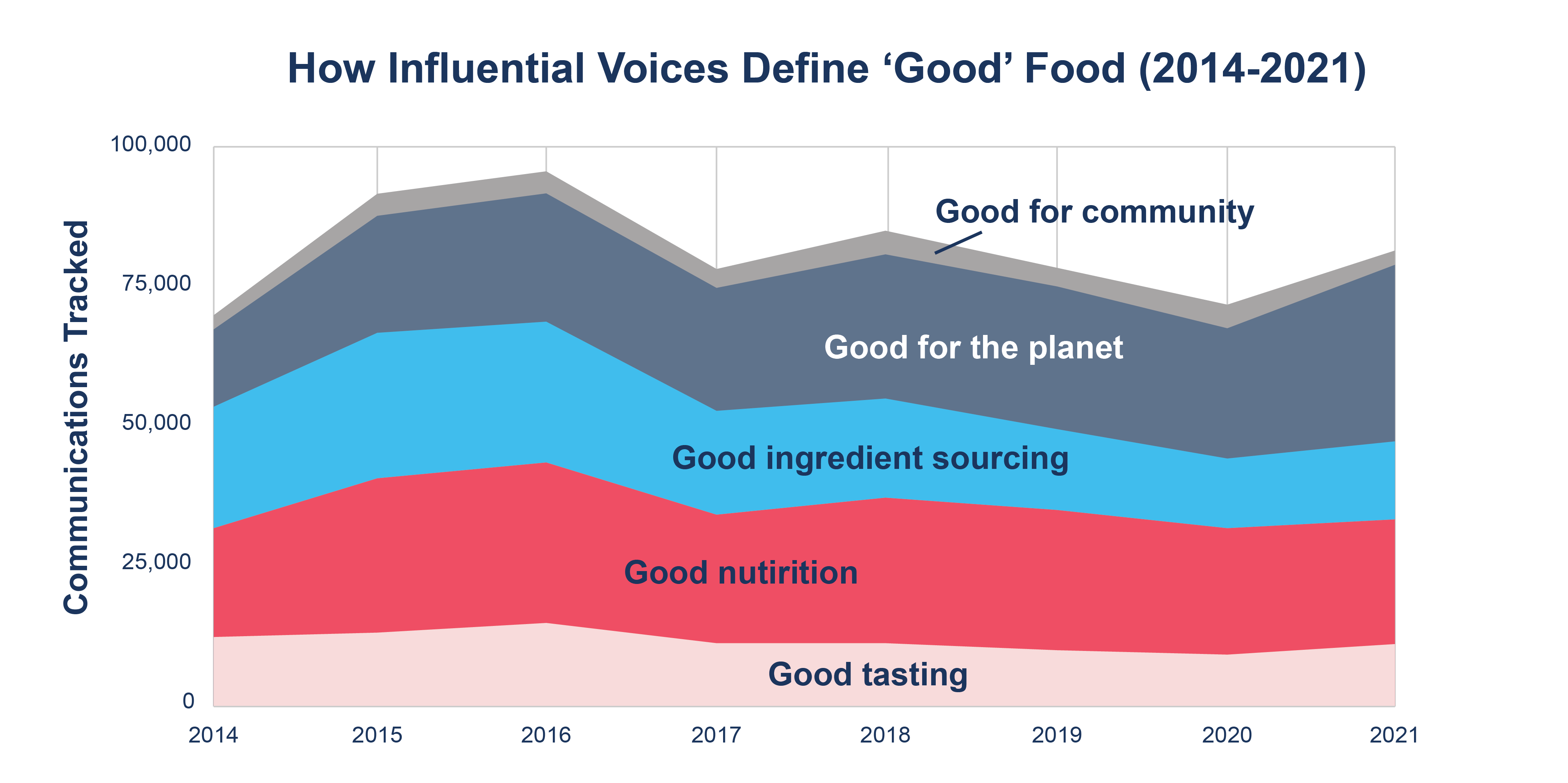The Appeals of ‘Good’: Digging Into the Data
Trends come and go, but a larger movement our Intel Distillery tracks is how food and beverage marketers define “good.”
By tracking conversations among the industry’s 1,500 most influential voices, Intel Distillery analysis uncovered just how widely their definitions vary. The focus ran the gamut from texture and flavor to ingredients and social agendas.
We reviewed conversations since 2014 and sorted them into five categories.
- Overall, concerns about our planet and nutrition have historically commanded the largest share of influential food production conversations.
- Conversations around communities and the planet increased the most in volume, while discussions around ingredient sourcing declined.

Source: Bader Rutter Intel Distillery. © 2021

Source: Bader Rutter Intel Distillery. © 2021
Product taste, texture, aroma and appearance are time-honored product descriptors. Discussions of these attributes remain stable from year-to-year. Most recently, producers of alternative proteins have focused heavily on replicating the taste and texture of traditional meat.
- Kellogg’s Morningstar Farms launches Incogmeato brand (2019)
- Vice investigates the intricacies of vegan egg replacements (2021)
“ Taste and freshness are non-negotiable, cost and health are differentiators.”
– MINTEL, WHAT AMERICA EATS (2021)
Nutrition and diet trends contribute to a product’s perceived healthfulness. While the shifting popularity of diet plans can quickly change what is considered healthy, the link between a “healthy” food and a “good” food remains consistently strong.
Attention to ingredient lists and production practices has fallen in the past decade, mainly due to this topic’s dominance prior to Congress passing a national GMO labeling standard in 2016. Transparency and “clean label” foods still hold sway in the marketplace.
- Panera releases “The No-No List” of artificial ingredients (2015)
- Campbell’s calls for national GMO labeling standard (2016)
“But just because something is artificial or its name is hard to pronounce doesn’t mean it’s unsafe… those moves are more about public relations than public health.”
– MICHAEL JACOBSON, FORMER EXECUTIVE DIRECTOR, CENTER FOR SCIENCE IN THE PUBLIC INTEREST (2015)
Carbon footprint and sustainability hold an increasingly important place in the idea of a “good” food. During the Trump administration, brands began addressing this proactively, rather than waiting for the government to spark change.
- Danone North America commits to researching regenerative agriculture (2018)
- Cargill, McDonald’s and Target partner with The Nature Conservancy to reduce greenhouse gas emissions from beef production (2020)
“The good news is that today we have more choices that can help us reduce our impact on natural resources and the climate while still enjoying tasty food.”
– ANDREW STEER, PRESIDENT AND CEO, WORLD RESOURCES INSTITUTE (2020)
In the past, the people who support and surround food and beverage production were rarely featured in product messaging. Since the onset of the pandemic, worker well-being, as well as diversity, equity and inclusion, have all become content in marketing.
- Quaker Oats retires its Aunt Jemima brand to address racist imagery (2020)
- Tyson hires chief medical officer to fight the impact of coronavirus in food production (2020)
- Coca-Cola weighs in on voting rights (2021)
” Fostering and feeding our communities is more than just words, it’s about the actions that support them. We’re proud to see our people standing for what they’re passionate about, and we’re celebrating alongside them.”
– MCDONALD’S (2021)